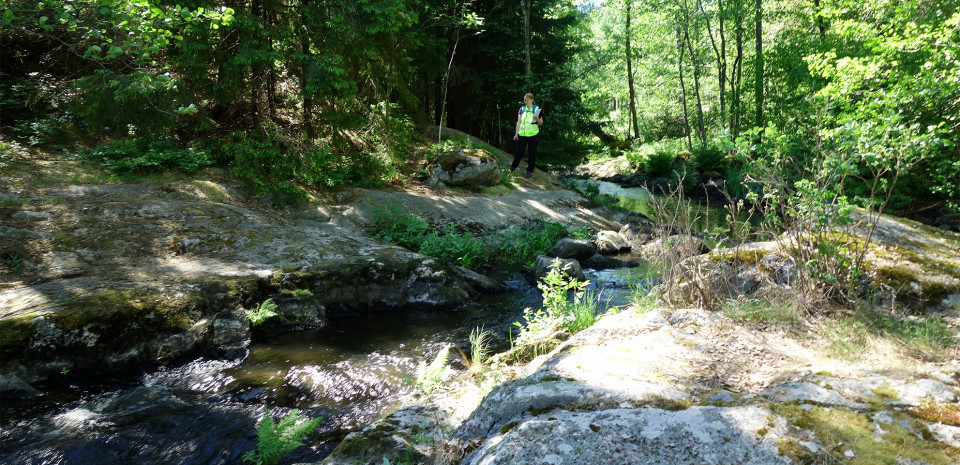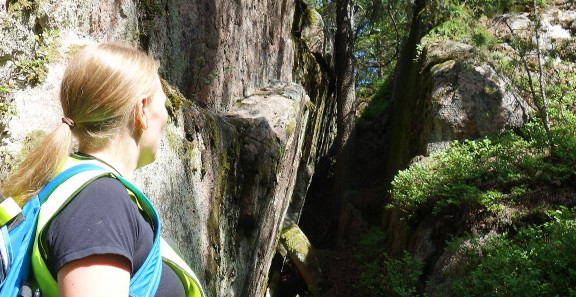Sitowise is involved in several of the largest rail projects in Finland. One special feature of the track between Jyväskylä and Tampere is its numerous tunnels – and now there’s one more on the drawing board. A railroad tunnel of more than five kilometers in length is being planned to replace an approximately eighteen-kilometer section of track in Jämsä, mainly for use by passenger traffic. Designing the tunnel will require both Sitowise’s EIA experts and its tunnel designers.
Several projects to improve the rail link between Jyväskylä and Tampere are being carried out over the next few years. One of these will straighten the section of track between Lahdenperä and Jämsä. “This is a single-track section of about 18.5 kilometers in length, which is currently slow and winding,” says Seppo Veijovuori, a planning manager in Sitowise’s Rail Department.
As the old track will remain in service primarily for use by freight traffic, the new tunnel is being planned as a single track. ”A multifold increase will be seen in the capacity of this section of track, as a straighter track will allow faster speeds for passenger trains and reduce travel times. Traffic will also be less vulnerable to disruptions.”
Two alternative routes through the rock
There are currently two alternative routes for excavating the tunnel through Central Finland’s high rocky hills. The final choice will be made on the basis of an Environmental Impact Assessment (EIA) that was launched at the beginning of the year.
We’re analyzing the impacts that each alternative will have on biodiversity and the environment, as well as the effects of noise and vibration from rail traffic. Local residents will also be able to have their say.
Seppo Veijovuori, Sitowise
“During the EIA’s program phase, we’ll be drawing up a work plan and interaction practices with local residents and other stakeholders,” says Veijovuori. Public events will probably be held online due to the coronavirus pandemic. “We’ve already gained experience in this area during design projects for a high-speed rail link between Helsinki and Turku.”
Sitowise’s experts will be responsible for the entire EIA process, such as onsite environmental surveys. ”In addition to biodiversity and environmental impacts, we’ll be assessing factors such as the noise and vibration caused by rail traffic, even though the area is primarily covered in forest and is currently quite sparsely populated.”
As the surroundings of every tunnel are unique, extensive preliminary surveys are required. A geologist has mapped the rocky outcrops.

Planning one of Finland’s longest mixed traffic tunnels
Once the EIA process has been completed, Sitowise’s designers will start work on the general design of the selected route. The tunnel on the newly straightened track may end up being up to five kilometers long. “Only the Vuosaari harbor rail tunnel is longer, and that’s only used by freight traffic,” says Ulla Sipola, a senior designer at Sitowise, who will be involved in planning the tunnel and also assisting with project management.
Sitowise’s specialists have gained expertise and experience from some of Finland’s largest road and rail tunnel projects, and this will be put to good use in the design of the new tunnel. “For example, we’ve designed several tunnels on the Espoo–Lohja section of track,” says Veijovuori.
Every tunnel is unique, and the same goes for its surrounding environment. Which is why planning always requires extensive surveys. “They provide us with important source data about the bedrock and its buildability,” says Sipola. When planning a tunnel,you must always be prepared for surprises in the natural materials. For example, you may encounter poor-quality rock or sections without any rock at all. “The rock acts as the tunnel’s load-bearing structure, so there must be enough of it on all sides.”
One advantage of building a tunnel is that the trains will be hidden underground. “In the case of rock tunnels in particular, the landscape will remain unchanged with the exception of the tunnel mouth and any necessary vertical shafts,” says Sipola. A tunnel will also provide protection from the elements. “Conditions are always stable underground.”
The advantages of tunnels include landscape preservation, protection from the elements, and stable conditions. Safety requirements have evolved, and Finnish tunnel planning is of the highest quality.
Ulla Sipola, Sitowise
Tunnel safety is improving all the time
New rail tunnels have been rare in Finland for quite some time, and the planning of tunnels for trains and trams has only recommenced in recent years. Rail tunnels differ from road tunnels in terms of their size and technology.
Tunnel equipment and safety requirements have evolved over time. “Tunnel planning involves close dialogue with fire safety and rescue tech authorities,” says Sipola. “Finnish tunnel planning is definitely top class, which is why the Finnish metro is the safest metro in the world.”
